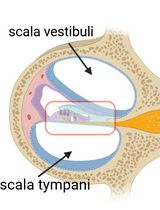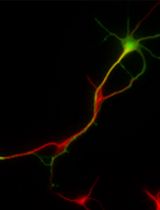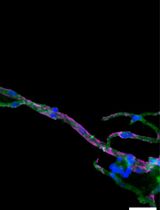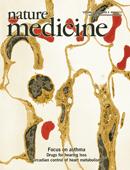- Submit a Protocol
- Receive Our Alerts
- Log in
- /
- Sign up
- My Bio Page
- Edit My Profile
- Change Password
- Log Out
- EN
- EN - English
- CN - 中文
- Protocols
- Articles and Issues
- For Authors
- About
- Become a Reviewer
- EN - English
- CN - 中文
- Home
- Protocols
- Articles and Issues
- For Authors
- About
- Become a Reviewer
A Protocol for Electrophoretic Mobility Shift Assay (EMSA) from Primary Neuron
Published: Vol 2, Iss 23, Dec 5, 2012 DOI: 10.21769/BioProtoc.300 Views: 29438

Protocol Collections
Comprehensive collections of detailed, peer-reviewed protocols focusing on specific topics
Related protocols

Cochlear Organ Dissection, Immunostaining, and Confocal Imaging in Mice
Chenyu Chen [...] Dongdong Ren
Jan 20, 2025 3606 Views

Primary Neuronal Culture and Transient Transfection
Shun-Cheng Tseng [...] Eric Hwang
Jan 20, 2025 2545 Views

Isolation and Imaging of Microvessels From Brain Tissue
Josephine K. Buff [...] Sophia M. Shi
Aug 5, 2025 2506 Views
Abstract
The interaction of transcriptional or co-transcriptional factors with DNA is crucial for changes of neuronal gene expression during normal brain development as well as neurodegeneration. The electrophoretic mobility shift assay (EMSA) is a very powerful technique for studying changes of neuronal gene expression and determining protein: DNA interactions. EMSA can be used qualitatively to identify specific transcriptional or co-transcriptional factors in brain crude lysates or primary neurons and, in conjunction with mutagenesis, to identify the important binding sequences within a given gene. An advantage of studying protein: DNA interaction by an electrophoretic assay provides a better understanding of epigenetic changes during normal brain development and neurodegenerative process.
Materials and Reagents
- Neuronal cell pellet
- Biotin 5' end-labeled and non-labeled DNA probes (competition) (Integrated DNA Technologies)
Table S- sequences of EMSA probes
- Positively charged nylon membrane (Sigma-Aldrich, catalog number: Z670197 )
- Tris base
- Boric acid
- EDTA
- BSA
- Poly (dIdC) (0.5 μg/μl) (Pierce Antibodies, catalog number: 20148 )
- Antibody (ab1437)
- 5x loading buffer (QIAGEN, catalog number: 1037650 )
- X-ray film
- High-quality blotting paper (Whatman, catalog number: 3030-931 )
- Polyacrylamide gel in 0.5x TBE
- Cytoplasmic extract buffer (NE-PER Nuclear and Cytoplasmic Extraction Kit) (Pierce Antibodies, catalog number: 78835 )
- Washing buffer (LightShift Chemiluminescent EMSA Kit) (Pierce Antibodies, catalog number: 20148 )
- Nuclear extraction buffer (NE-PER Nuclear and Cytoplasmic Extraction Kit) (Pierce Antibodies, catalog number: 78835 )
- 2x reaction buffer (LightShift Chemiluminescent EMSA Kit) (Pierce Antibodies, catalog number: 20148 )
- Acrylamide
- Bis-acrylamide
- TBE buffer
- TEMED
- Ammonium persufate
- Phosphatase inhibitors
- 6% non-denature PAGE gel (see Recipes)
- 5x TBE (pH 8.3) (see Recipes)
Equipment
- Centrifuges
- UV lamp or crosslinking device equipped with 254 nm bulbs or 312 nm transilluminator
- Electrophoresis apparatus
- Electroblotter or capillary transfer apparatus
- 1.5 ml microcentrifuge tube
Procedure
- Prepare the nuclear protein extract from neuron
- Collect 1-5 x 106-7 neurons pellet in 1.5 ml microcentrifuge tube (DIV 14 Primary cultural neuron was from mouse E16.5 cortex).
- Resuspend neurons in 200 μl cytoplasmic extract buffer with protease and phosphatase inhibitors, and keep on ice for 10 min to break the cell membrane.
- Spin cells at 16,000 x g for 5 min at 4 °C to separate nuclei with cytoplasmic component (quality of fraction was tested by nuclear/cytoplasmic protein markers-HDAC1 and HSP90).
- Remove supernatant as cytoplasmic extract.
- Wash the nuclear pellet with 300 μl washing buffer.
- Spin cells at 16,000 x g for 10 min at 4 °C to pellet the nuclei.
- Resuspend the nuclear pellet in 100 μl nuclear extraction buffer and aliquot the lysate into10 μl/tube.
- Freeze the nuclear extracts in -80 °C.
- Measure protein concentration and adjust it to 1 μg/μl with the extraction buffer for use in gel shift assay.
- Collect 1-5 x 106-7 neurons pellet in 1.5 ml microcentrifuge tube (DIV 14 Primary cultural neuron was from mouse E16.5 cortex).
- Prepare and pre-run gel
- Prepare a native PAGE gel in 0.5x TBE. The appropriate polyacrylamide percent depends on the size of the target DNA and the binding protein. Most systems use a 4 -6% PAGE gel in 0.5x TBE.
- Place the gel in the electrophoresis unit. Fill the inner chamber with 0.5x TBE to a height several millimeters above the top of the wells. Fill the outside of the tank with 0.5x TBE to just above the bottom of the wells, which reduces heat during electrophoresis. Flush wells and pre-electrophorese the gel for 30-60 min at 100 V.
- Prepare a native PAGE gel in 0.5x TBE. The appropriate polyacrylamide percent depends on the size of the target DNA and the binding protein. Most systems use a 4 -6% PAGE gel in 0.5x TBE.
- Perform binding reactions
- 2x reaction buffer 12 μl.
- BSA (1 μg/μl) 3 μl.
- Poly (dIdC) (0.5 μg/μl) 2 μl.
- Nuclear extract (1 μg/μl) 3 μl (cytoplasmic extract as control).
- dH2O 3 μl.
- Keep at room temperature or on ice for 10 min without Antibody, 20 min with Antibody; Keep rotation (option).
- Add in Biotin-labeled DNA probe (20 fmol/ reaction).
- Keep at room temperature for 20 min.
- 2x reaction buffer 12 μl.
- Electrophorese binding reactions
- Add 5 μl of 5x loading buffer to each 20 μl binding reaction, pipetting up and down several times to mix. Run gel at 200 V for 1-1.5 h. Use DNA loading buffer in lane 1 as indicator of free probe. Free probe usually run at the same mobility as the blue dye of the DNA loading buffer. Stop the gel when the dye runs at 3 cm to the bottom.
- Electrophoretic transfer of binding reactions to nylon membrane
- Soak nylon membrane in 0.5x TBE for 15 min.
- Sandwich the gel, nylon membrane and blotting paper in a clean electrophoretic transfer unit.
- Transfer at 380 mA (~100 V) for 30 min.
- When the transfer is complete, place the on a dry paper towel for 1-3 min.
- Soak nylon membrane in 0.5x TBE for 15 min.
- Crosslink transferred DNA to membrane and detection
- 10-15 min with the membrane face down on a transilluminator equipped with 312 nm bulbs.
- After the membrane is crosslinked, proceed directly to the LightShift Chemiluminescent detection kit. Alternatively, the membrane may be stored dry at room temperature for several days.
- 10-15 min with the membrane face down on a transilluminator equipped with 312 nm bulbs.
Recipes
- 6% non-denature PAGE gel
For example, to make 50 ml volumes gel:
7.5ml 40% acrylamide
5ml 2% Bis-acrylamide
2.5ml 10x TBE buffer
50 μl TEMED
0.5 ml 10% ammonium persufate
34.5 ml dH2O - 5x TBE (pH 8.3)
450 mM Tris
450 mM boric acid
10 mM EDTA
Acknowledgments
This protocol is adapted from Li et al. (2012).
References
- Li, J., Chen, J., Ricupero, C. L., Hart, R. P., Schwartz, M. S., Kusnecov, A. and Herrup, K. (2012). Nuclear accumulation of HDAC4 in ATM deficiency promotes neurodegeneration in ataxia telangiectasia. Nat Med 18(5): 783-790.
Article Information
Copyright
© 2012 The Authors; exclusive licensee Bio-protocol LLC.
How to cite
Li, J. (2012). A Protocol for Electrophoretic Mobility Shift Assay (EMSA) from Primary Neuron. Bio-protocol 2(23): e300. DOI: 10.21769/BioProtoc.300.
Category
Neuroscience > Development > Neuron
Molecular Biology > DNA > DNA-protein interaction
Cell Biology > Tissue analysis > Tissue isolation
Do you have any questions about this protocol?
Post your question to gather feedback from the community. We will also invite the authors of this article to respond.
Share
Bluesky
X
Copy link








